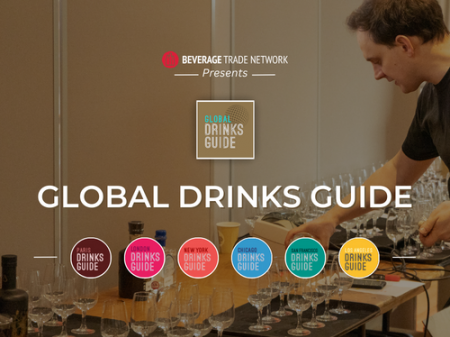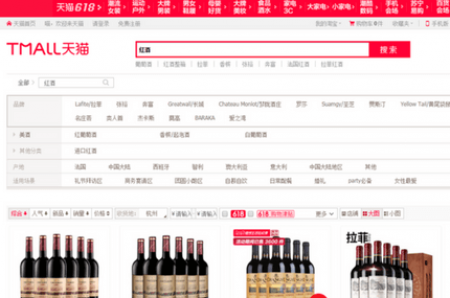Sommeliers Choice Awards 2024 Winners
Training Programs for Craft Spirit Brand Reps
Selling a big brand is much like driving to a gas station to top off your tank. Selling craft spirits is like fabricating the tank that you will eventually be able to put gas in.

Selling a big brand is much like driving to a gas station to top of your tank. Selling craft spirits is like fabricating the tank that you will eventually be able to put gas in.
Luckily, in almost every US market across the country, the Farm-To-Table movement has enjoyed much acclaim in the last decade and the maturing trend in eating local has also spearheaded a larger consumer base willing to drink local. Now, the Farm-To-Glass movement seems to have truly gained steam.
Unfortunately, there is a serious gap that occurs between distribution and product placement that small and medium sized craft distilleries seem to have a hard time identifying. Whether it is the lack of resources or the passionate belief that the product is the most important aspect of the company, many craft distilleries find themselves bottlenecked by increasing competition when they are ready to expand past their local market.
Even if they clearly identify the future of their distribution network as a potential problem early, they are often overwhelmed by the amount of energy they need to put into forging the links needed to bridge the distribution gap in the sales chain.
That’s why it is important to dedicate time into developing a successful sales team early in the distillery’s lifetime.
The ultimate goal of training your Brand Representatives is to interest retailers and distributors in products they are not aware exist (which can be extraordinarily frustrating, to-say-the-least) and it is your job to give your team the best chance of successfully converting these accounts.
It should always be your first priority to determine how you would like your brands portrayed and where you would like to see them. Once you’ve decided what your target accounts are going to be, it is up to you develop a message that will resonate, not only across your retailers and distributors base, but with your consumers also.
Looking at Potential Accounts
Hotels, restaurants, liquor stores, bars - by taking a look at each inventory on an account-by-account basis you will give yourself a good idea of how receptive each desired account will be. Once you’ve established realistic goals for your team, give them a full arsenal of trade programs to incite positive reactions from buyers at their scheduled meetings. This means understanding target retail prices that work, the margins each partner will want, how much your sales team will earn on each sell and then wrapping it all up in a trade marketing package that still leaves a healthy margin for yourself.
To be as effective in your time management as possible, make sure you know the right visiting hours for each establishment. For example, you should plan on seeing a liquor store between 12pm to 3pm and a restaurant between 2pm to 5pm (when they are not busy with lunch or dinner and have the time to meet with you.) It is very important that you know and respect the right hours for your target audience.
Leveraging the Strength of Your Image
Really make it a point to create your brand image around experiences that allow consumer engagement. Depending on how big your brand is, the distiller or your sales reps need to be the face of your product at tastings and events. More than just the friendly face, they need to be the face that actually SELLS the product. People will buy products that they associate with happy memories and they feel a personal connection with, but the connection needs to ultimately lead to a dollar sign.
To a small distillery just starting out attending events can be very costly, but if you don’t attend you risk stunting your growth, both in your local and future markets. Try to choose events carefully and attend at least one per quarter. Focus in on attending those that offer a significant amount of promotional advertising.
Trade shows offer your brand reps a great opportunity to promote your brand in front of potential new distribution and retail partners and consumer shows give your team the best chance at getting the product into the hands of the ultimate buyers.
Whether at an event or in person, encourage store/bar/restaurant owners and distributors to visit your distillery. They are more likely to promote a product they feel connected to and it also gives your team a clear path to a follow-up meeting.
Similarly, engage with your consumer and create experiences at your distillery that allow you to reach large audiences. Once you have touched them personally, encourage them to share their new passion for your brand with friends and family and get them to ask for you at their local liquor store.
Do Not Underestimate the Power of Social Media
Make sure your branding is consistent on all platforms with regard to Logos and names. Leverage your social media presence and engage with people online. They will lend credibility to your brand in a way you never can, because most people trust the opinion of their peers. Let your followers know where your products are available. Take pictures of your brand on the shelf or behind the bar and create hashtags. Agree upon a hashtag for your brand and use it consistently on your social media platforms. This is a very powerful tool on Google when people are searching for your brand.
Think of Twitter as a very useful B2B tool and use it as such to get into contact with accounts that are otherwise difficult to connect with. Similarly, LinkedIn can also be an extremely useful networking tool. The value of both of these tools is that you can potentially connect directly with a decision maker without physically going into the field.
When the weather does not allow your team to get into the streets, then get them online and networking with influential buyers across their local territory.
You can get your sales team to take advantage of your social footprint at their retailer and distributor meetings by showing key buyer’s that you have already build a strong brand that they won’t need to up-sell to their customers.
Training Your Team
One of the greatest tools for conquering the frustration that often comes from the challenges associated with closing accounts is implementing the 10X rule. Simply understanding that, on average, for every 10 accounts you or your team visits only one will become a client will make the goals you set out in your brand rep meetings a lot clearer, both for them and yourself.
When you begin to work with a large volume of meetings, remember that follow-up is king. Make certain to get your team to set aside at least two days for administrative tasks and connecting with the people whose establishments you have taken the time to visit. Write concise emails as templates that they can follow and get them to make “tentative appointments” months in advance, if necessary.
Do not let your Brand Reps let all of their efforts go to waste by neglecting to keep up-to-date notes on their lead generation.
CRM Software Works
Invest in Customer Relationship Management Software. Often brand owners are put-off because the software can be very costly, especially for a growing brand, but losing potential customers because of poor sales lead management is one of the biggest reasons for a broken sales process.
Whether it’s a business card you team gets at a trade show or your neighbor’s friend who has a sister that works for a distributorship – having a comprehensive and integrated platform for your team to follow up on leads and note down important notes on past encounters with potential accounts is very valuable.
Make sure each team member has access to everybody’s notes, so that if they need to call on an account that isn’t one of their own they can be updated on any important interactions that other team members have had with the account in the past.
Always have your team stop in and see how your products are doing. In every visit, they should offer tastings and take re-orders. Get your team to visit even if you have nothing new. Your team should be continually communicating that you are there to support your brands and facilitate sales, every step of the way.
The “DO NOT DO” list.
• Never let your team show up late to an appointment without calling ahead
• Never let your team cancel without immediately rescheduling
• Do not “make-up” brand facts or let your team make up facts. Your credibility is everything in this industry.
• Do not let your team agree to terms you are not certain you can honor to secure a new account. Again. Your credibility is everything.














